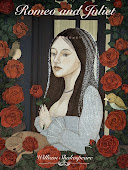 |
| Photos © Ravenshutleystudios.com |
Check out more of Jade Orlando's work at jadefrolics.com and Bright Agency!!
Friday, January 31, 2025
 |
| Photos © Ravenshutleystudios.com |
Saturday, January 18, 2025
SCAD-ATLANTA Illustration students never cease to amaze us with their creativity and innovative approaches to illustration. Our Senior Spotlight celebrates some of our most dedicated and inspiring graduates. This week, we’re thrilled to highlight Jessica Shime and her incredible journey in illustration. Join us as we explore her talents, passions, and the stories she brings to life!
Name: Jessica Shime
Pronoun: she/her
Hometown: Decatur, GA
Major/minor: Illustration
Website URL: https://www.jessicashime.com/
Instagram ID: @jessica_shime
ILLU: Tell us about your first encounter with "illustration" and/or the moment you decided to pursue a career in illustration.
JS: My first encounter with illustration was likely through children’s books when I was younger. I was fascinated by everything mythical and fantastical. I didn’t realize illustration could be a career path or a field of study until a professor at Georgia State introduced me to it while I was studying biology. After taking a drawing class, that professor encouraged me to pursue a creative path, as I wasn’t feeling fulfilled by my current studies. I’m incredibly grateful for their guidance and the push to follow my passion.
JS: My greatest achievement in the illustration department was the quarter when I was juggling three different studio classes. My advisors had warned me that it might be too much coursework, but looking back, I’m really glad I took it on. It showed me what I’m capable of and pushed me to realize just how resilient I can be. By the end of it, I felt incredibly fulfilled and better for having had the experience.
ILLU: Yaaasssss, Jessica!! We're so proud of you. What would your illustration dream job look like or be?
JS: I would love to be in a position where I could illustrate fantasy children’s books like the ones I grew up reading. Those stories inspired me so much as a child and sparked my imagination in ways I’ll never forget. It would mean the world to me to create that same sense of wonder and inspiration for another child.
ILLU: Amazing. Do you have any words of advice for underclassmen?
JS: My advice for underclassmen is to embrace failure—it’s a natural and essential part of growth. When I first started at SCAD, especially in illustration, I received a lot of critiques from my teachers and professors, and that’s completely okay. The key is to learn from that feedback and use it to improve. How you start SCAD is not how you’ll finish SCAD. It’s a long journey, and one of the most rewarding parts is looking back at the end and seeing how much you and your peers have grown and evolved. So, embrace the process, don’t be afraid to fail, and most importantly, take care of yourself. Make time to relax and prioritize your mental health—happy artists make great art!
ILLU: Facts! I'm just curious,,, What is/are your favorite color(s) and why?
JS: My favorite color is green! I love being surrounded by nature and drawing trees—it’s just so fascinating and inspiring. There’s something so magical about lush green forests, and I always associate the color green with that sense of peace and wonder. Nature is just so incredible, and green perfectly captures its beauty for me.
ILLU: How about... What is/are your favorite art tool(s)?
JS: I absolutely love the lasso tool in Photoshop and Procreate. It’s funny because when I first started my digital art journey in 2022, I was so against using the lasso tool. But now, it’s become my go-to tool and a total lifesaver. It allows me to work so much faster and more efficiently, and I honestly can’t imagine creating without it!
ILLU: Hahaha, the lasso tool is definitely lassoing! Finally,,, Let's get personal. What is one thing that really matters to you?
JS: Something that truly matters to me is using my art, creativity, and career—wherever it takes me—to make a positive impact on others. Art brings me so much joy, and I hope to share that joy with others by telling stories that inspire people to create positive change in their own lives or communities. My ultimate goal is to leave the world a little better than I found it, and I believe art has the power to do just that.
Website URL: https://www.jessicashime.com/
Instagram ID: @jessica_shime
All images © 2025 Jessica Shime
Friday, August 11, 2017
Tuesday, November 24, 2015
Sunday, September 20, 2015


